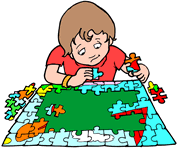 Learning in a Web 2.0 World
Learning in a Web 2.0 World
Combine the power of Web 2.0 with traditional resources to reach your learning goals.
Let's explore the combination of Literature Circles and wikis. Check out a project under development called WikiLit.
Civil War Literature
Go to the Civil War Literature wiki for an example of a "wiki starter"
Brainstorm ways that you could use the power of Web 2.0 to teach a unit on Courage and Responsibility: The American Civil War focusing on the impact of the war on the Midwest.
- Across Five Aprils by Irene Hunt (Illinois)
- Captured! A Boy Trapped in the Civil War by Mary Blair Immel (Indiana)
- Guerrilla Season by Pat Hughes (Missouri)
- The River Between Us by Richard Peck (Illinois)
- Soldier's Heart by Gary Paulsen (Minnesota)

You can embed video in a wiki as shown below. Or you can link directly to YouTube: Gettysburg.
Web 2.0 Learning
Web 2.0 provides many opportunities for students to explore resources and collaborate on projects. As you design lessons, consider some of the following ideas:
Activate. Motivate with virtual worlds, blogs, and wikis. Use them as a catalyst to generate interest in a new topic. Help students see the excitement and energy that can be found in a subject. For example, show the enthusiasm of mathematicans by exploring 3-D models in Second Life or the connections in literature through a wiki.
Connect. Provide a context or establish a connection. Bring relevance to the discussion by using a “real world” situation or example.
Critique. Critically evaluate an idea or perspective by using examples to support a position. Many of these examples can be found in professional blogs and wikis.
Deepen. Add depth to a learning situation by providing a detailed explanation, thoughtful observation, or new resource that provides additional information or insights. For example, use a law blog to learn more about law and ethics.
Expand. Broaden thinking by providing an alternative perspective or different point of view. For example, use resources from different countries to examine cultural differences. Jump into conversations with people from around the world.
Fresh Look. Use Web 2.0 technology to provide current, immediately relevant examples. For example, get the latest science or fashion news. Check a wiki for the latest data and statistics.
Inform. Provide primary sources or data that help explain an idea already presented. For example, you can track earthquakes and volcanoes. Consider a statistic or graph that illustrates a point.
Launch. Look for social networks, blogs and wiki as a place for new, innovative ideas. Be the first to present a new idea rather than simply commenting on the work of others. Ask questions to keep the new idea going.
Synthesize. Bring a number of ideas together. For example, consolidate these comments and draw a new conclusion.

